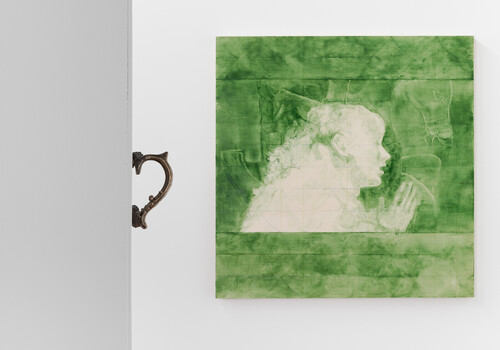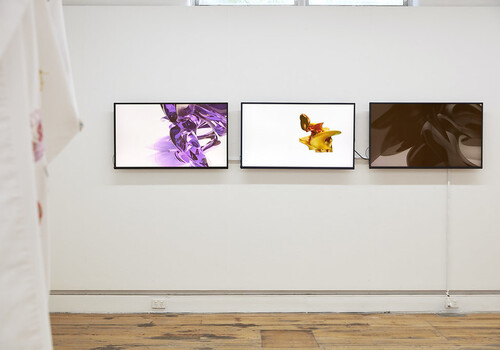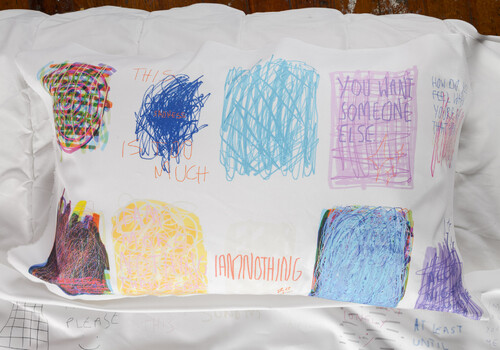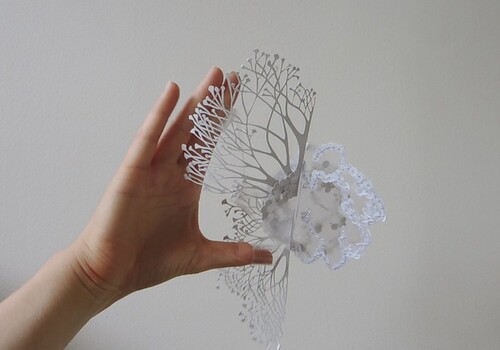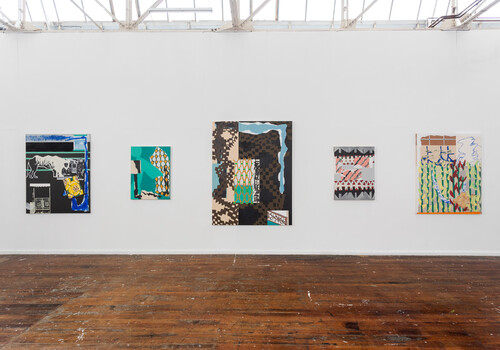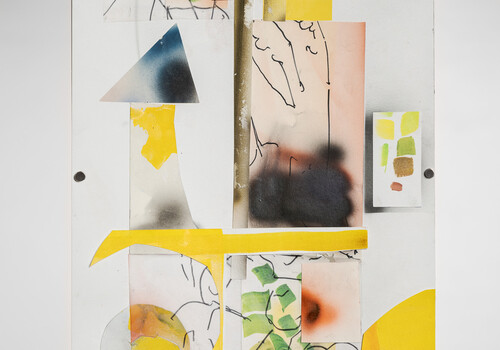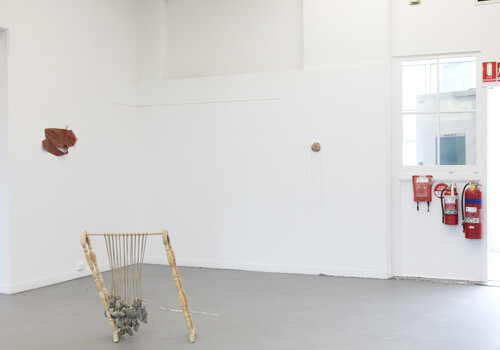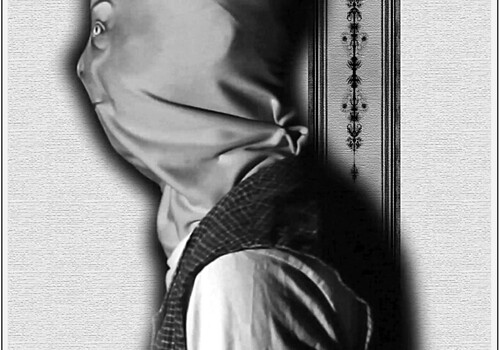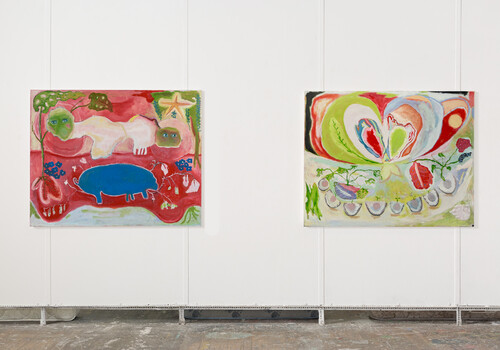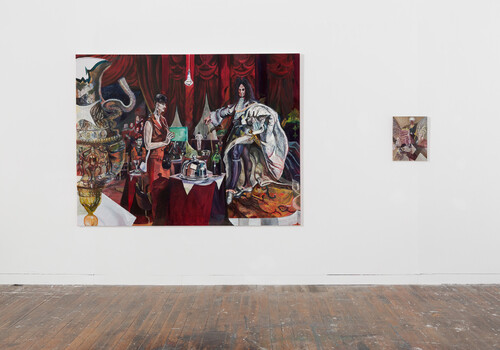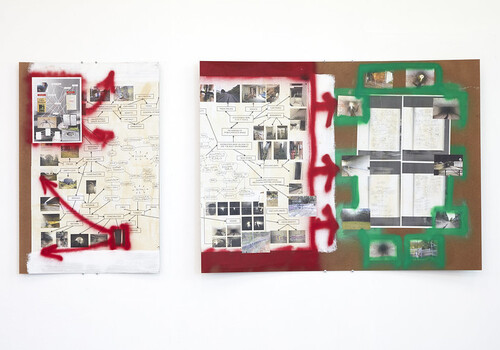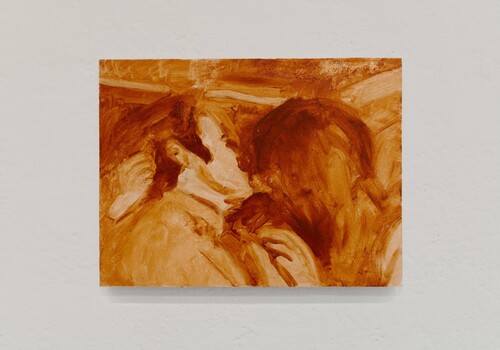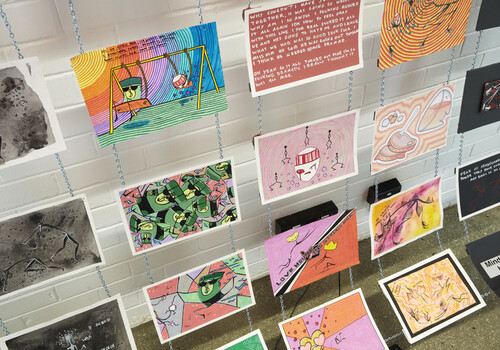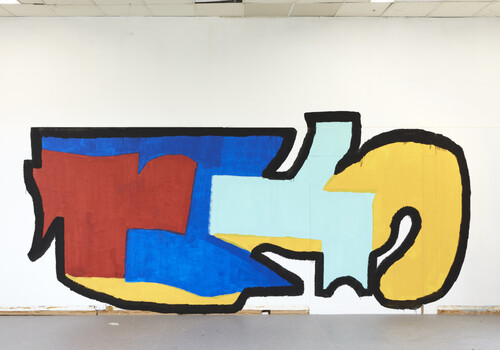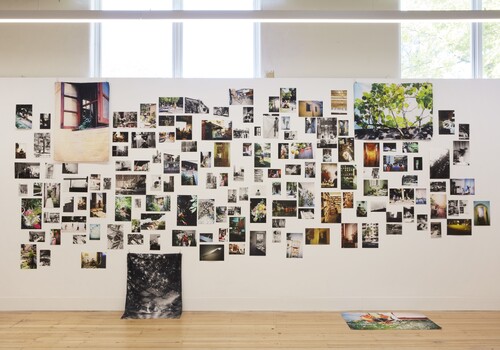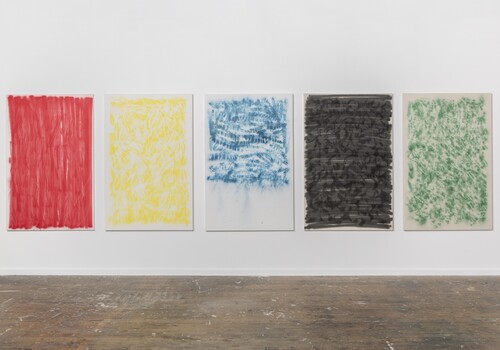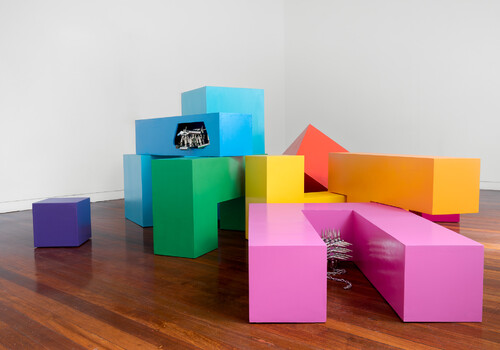Drawing and Printmaking, Victorian College of the Arts
By Yugong Shao
Walking through the dazzling drawing and printmaking section of the 2020 VCA grad show, it occurred to me that many of the exhibited works conformed in one way or another to the logic of seriality. What do I mean by seriality? It can be understood as the repetition of a standard form. It is a structural principle that sustains continuity even under conditions of change and difference. Discrete works of art can also form part of a series; and when works are arranged so as to operate as part of a sequence, they appear serial. When we identify serial patterns of repetition and difference, our perspective expands from the immediate to include the relations between things and subjects. Indeed, considering that over 100 artworks by 22 emerging artists were presented by the Drawing and Printmaking department, seriality offered a way to both balance chaos within the exhibition and to distinguish individuality.

In Yellow Vision (2020), Nisha Hunter used the colour of turmeric to unite her various mediums: printing, video, installations, writing poems and textile works. This use of colour reminded me of Yves Klein’s repetitious explorations in blue. With Hunter’s Indian cultural background, turmeric connects the artist’s memories, dreams, tastes, smells, seeing and writing. It is through these that humans experience the world and explore their sense of self. One section of the installation, titled Yellow Daal (2020), comprised six pieces of equally sized turmeric-dyed rice paper with a poem by Hunter displayed in a staggered formation on the gallery wall. The serial arrangement of this work—the repetition of like forms—might be understood as having taken its cue from Western Modernism. Only here it is re-routed along postmodern lines to include a consideration of identity and race. Indeed, the seriality seen in Yellow Daal reminded me of Roni Horn’s sculpture series When Dickinson Shut Her Eyes (1993) and Keys and Cues (1994–96), as both artists merged the lines of poems into the works to create an ordered visual outcome.
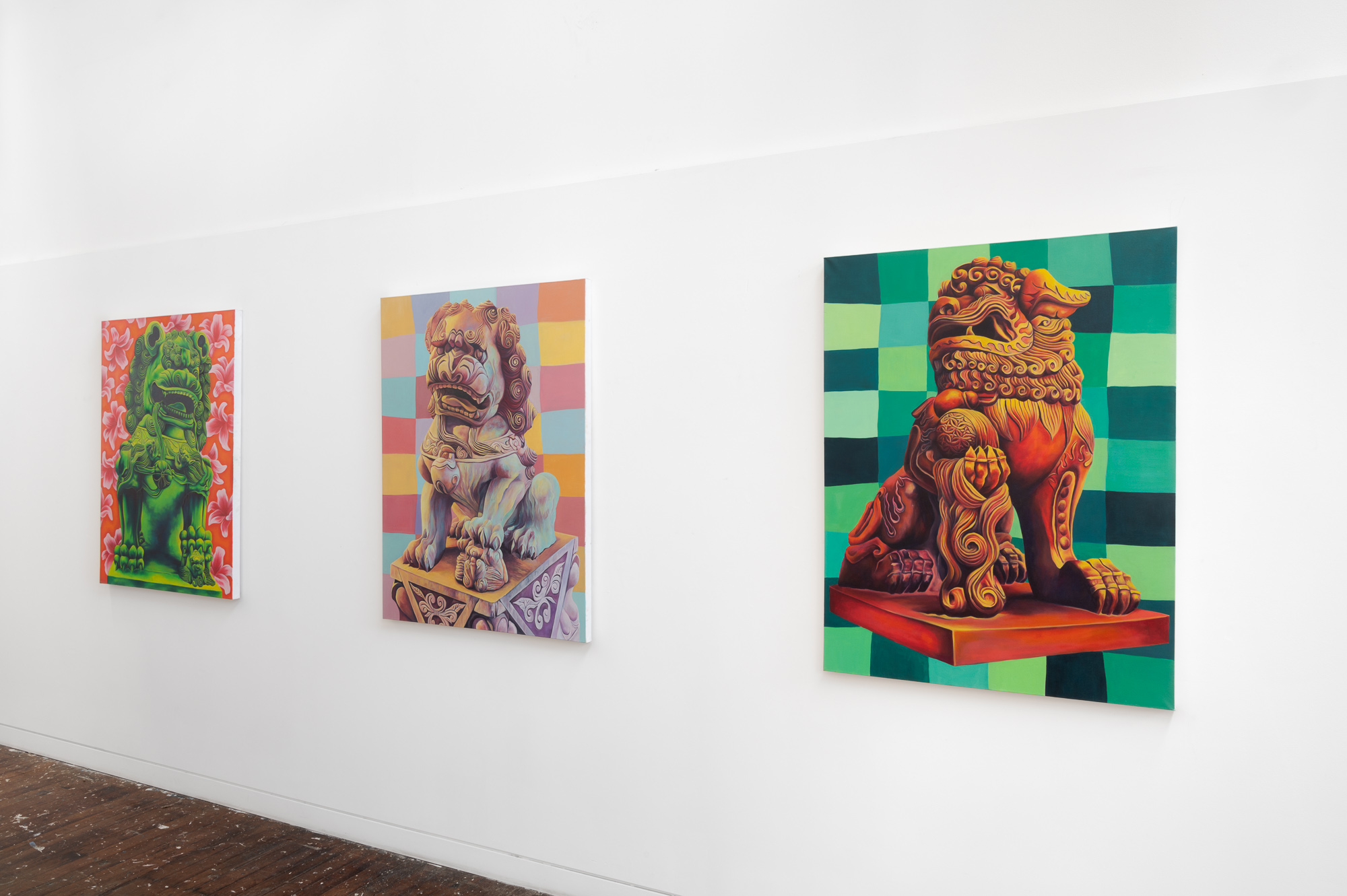
Ruby Li’s paintings of Chinese guardian lions, Series Untitled (2020), were presented as a collection of three near-identical works. All three paintings were executed with similar compositions and followed the same formal principle. The unreal colours and exaggerated expressions depicted distinctly Chinese cultural subject matter yet bore no stylistic resemblance to traditional Chinese art; the lion statues, shown from different angles, appeared inauthentic. I wondered why, instead of treating the guardian lion as a unique subject, Li chose to repeat it in this way? I sensed that cultural displacement was perhaps analogous to the artist’s mixed cultural identity. Repetitions emphasise the dilemma between the reclaimed Chinese identity and westernised ways of thinking and self-representation. It is as though each painting, almost identical yet slightly different, represented the artist’s own identity in difference.
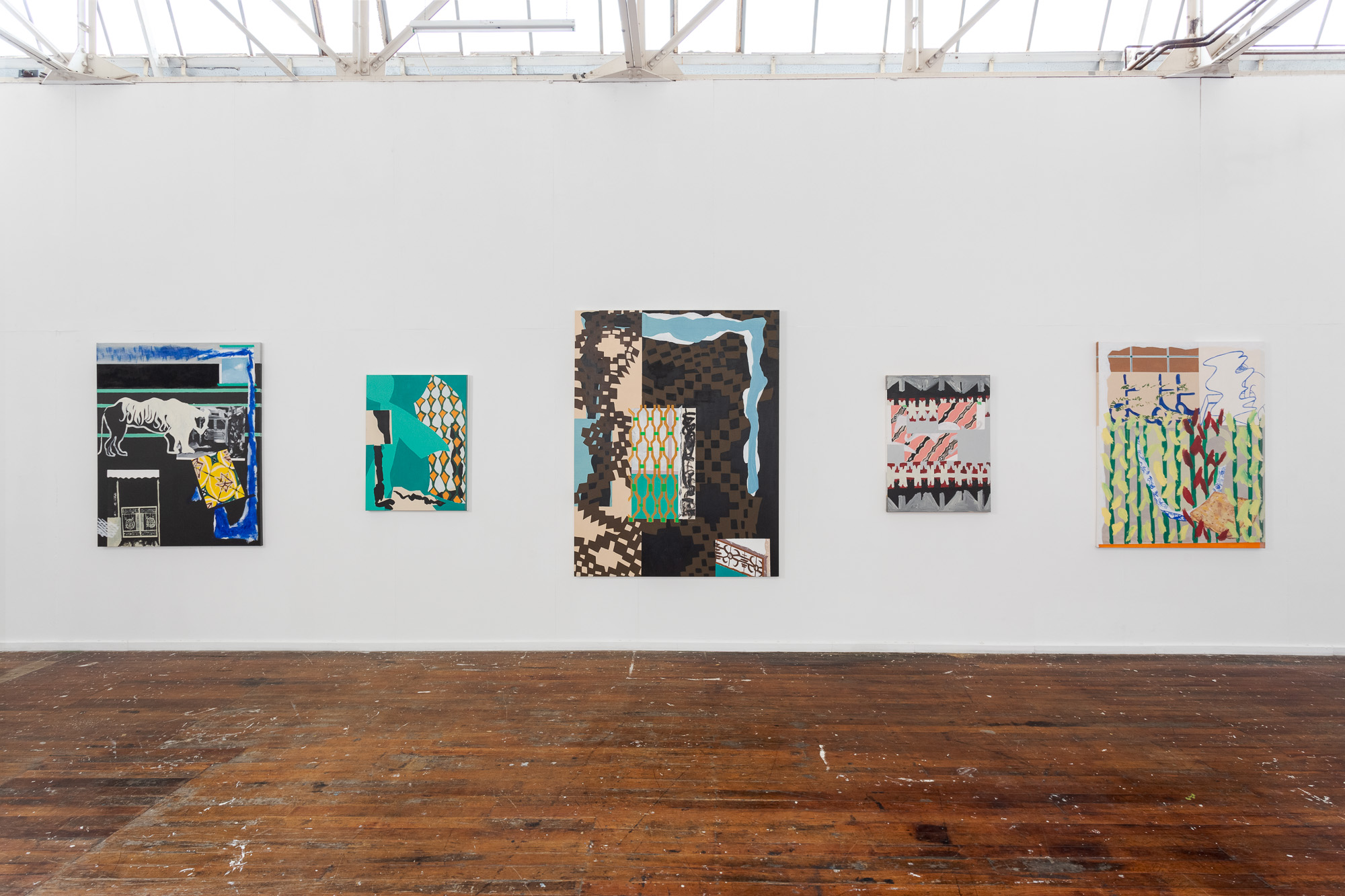
The symmetric installation of John Lim’s five paintings, Laser Disks (2020), Blue Heaven (2020), Island-ness (2020), Rug51 (2020) and Unset (2020), highlighted the interrelationships between each work. In these flat compositions, colour patches taken from public spaces in Malaysia were weaved together with visual cues that represent the artist’s childhood experience in Penang. These included the decorative patterns of tiles and ceramics and the painted wrought iron lacework. Linked as a series, Lim’s paintings evoked a subjective narrative of the artist’s Malaysian heritage and, therefore, depicted a personal meditation upon the concept of home, our relationships, and how this environment informs our aesthetic sensibilities.
Upon reflection, I wonder if seriality is a liberation or a constraint? It is interesting that so many graduating artists have chosen to use seriality and repetition as a formal element in works that consider very complex questions around identity and race. It would seem that the impossibility of representing those personal narratives are countered by this ordering logic. Through seriality, these artists fashioned a tension within the immeasurability of a subjectivity complicated by cultural displacement.
Yugong Shao (she/her) is an art curatorship postgraduate student at the University of Melbourne.
